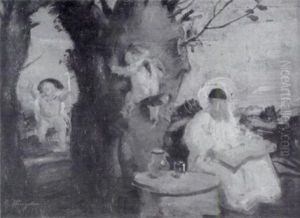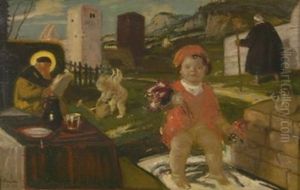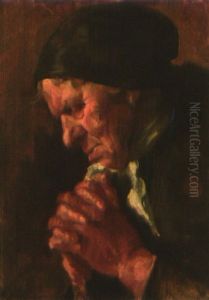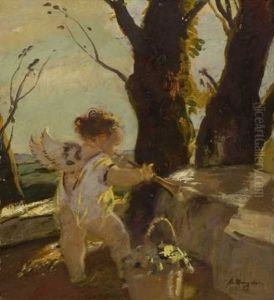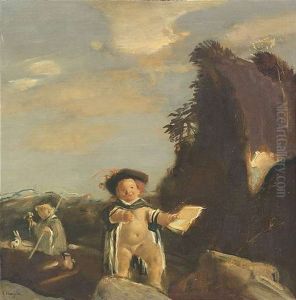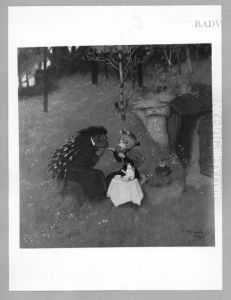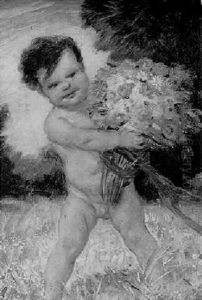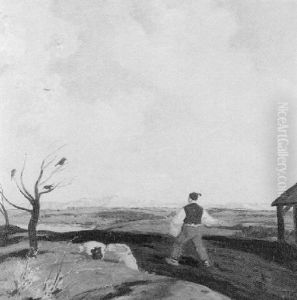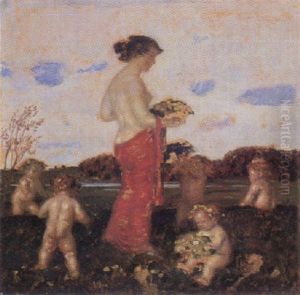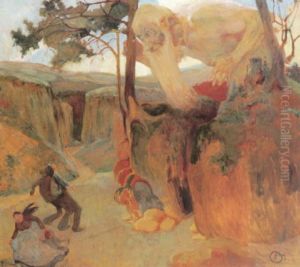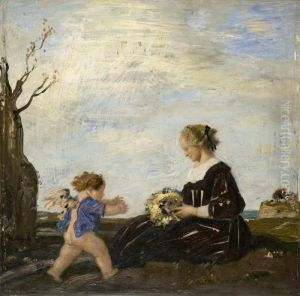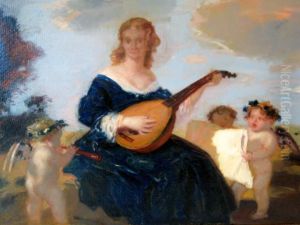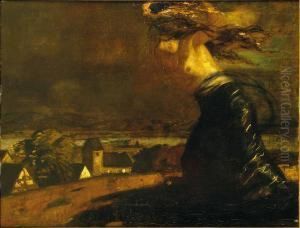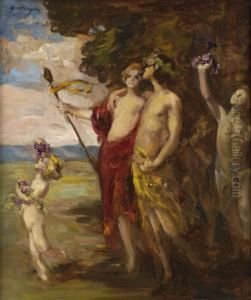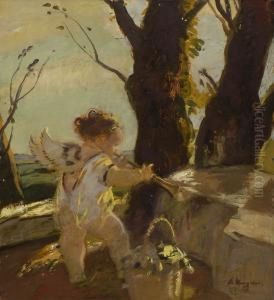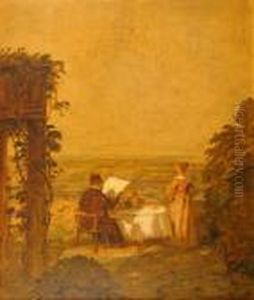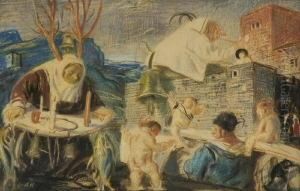Adolf Hengeler Paintings
Adolf Hengeler was a German illustrator, painter, and cartoonist, born on June 6, 1863, in Munich, Germany. He was known for his contributions to satirical magazines and his distinctive style of illustration that often contained humor and a keen observation of contemporary society.
Hengeler started his artistic education at the Munich Academy of Fine Arts, where he studied under notable professors such as Ludwig von Löfftz and Nikolaus Gysis. His talent was recognized early on, and he quickly found a niche in illustration, which suited his skills and interests.
During his career, Hengeler worked for several well-known satirical magazines, including 'Fliegende Blätter' and 'Simplicissimus', which were popular publications in Germany at the time. His work for 'Simplicissimus' is particularly notable as it contributed to the magazine's reputation for sharp social commentary and political satire.
Aside from his work in illustration, Hengeler also created paintings, although these are less well-known than his graphic work. His illustrations often depicted scenes of everyday life as well as fantastical and mythological subjects, executed with a distinct linearity and clear composition.
Adolf Hengeler's influence extended to his role as a teacher at the Munich Academy, where he shared his knowledge and skills with a new generation of artists. Despite his success, Hengeler remained somewhat outside the main artistic movements of his time, such as Expressionism or Cubism, favoring a more traditional, representational style.
He died on December 16, 1927, in Munich. Today, Hengeler's work is considered a significant contribution to German graphic art of the late 19th and early 20th centuries, and his illustrations are still appreciated for their wit and craftsmanship.




